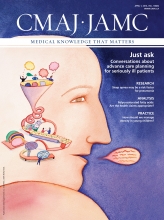The stethoscope is perhaps the most recognizable totem of the modern-day physician. From its initial design by René Laënnac in the early 1800s, to the Littmann Cardiology III stethoscopes that now adorn the majority of medical students’ and physicians’ necks, in our patients’ eyes the stethoscope is a fundamental symbol of medicine. Yet, as John Finley points out in Teaching Heart Auscultation to Health Professionals: Methods for Improving the Practice of an Ancient but Critical Skill, medical students, residents and qualified physicians recognize less than 40% of heart sounds heard through cardiac auscultation.1
In an increasingly complex and technologically based health care system, accurate auscultation remains essential for distinguishing normal from pathologic heart function. Appropriate diagnosis can prevent inappropriate use of expensive diagnostic tests and specialist referrals for patients with a low probability of cardiac disease, while ensuring timely care for those with significant pathology.
A professor of pediatric cardiology at Dalhousie University in Halifax, Nova Scotia, Finley contends that auscultation is the most important, and most challenging, aspect of the cardiovascular physical exam. Nonetheless, medical schools rarely employ modern methods of teaching this important skill, and there are few validated education methods for doing so.

Image courtesy of Canadian Pediatric Cardiology Association
“Hearing is a sense, but listening is a skill that can be improved,” says Finley. This book uses a variety of interdisciplinary expertise (from medical education to music, audiophonics and psychoacoustics) to explain the underlying theory of how the brain learns to listen. Perhaps more appropriately, Finley makes concrete, practical and cost-effective recommendations for how to teach heart auscultation to medical students, residents and nurses. These include:
-
a description of an evidence-based auditory training program with a curricular schedule for its introduction into medical school
-
the use of live-recorded heart sounds heard through stethophones as the recommended methodology
-
alternative recommendations for more cost-effective teaching methods using Web-based or digital recordings and how best to reproduce them in lecture format.
Teaching Heart Auscultation is an easy read for undergraduate and postgraduate administrators and course directors involved in curricular design for cardiovascular medicine. I’d absolutely recommend it to anyone willing to listen.
Footnotes
-
Kieran Quinn is researching medical education surrounding the competency of physicians in interpreting ECG patterns, and the mechanisms of exercise-related cardiac arrhythmias in otherwise healthy people.











